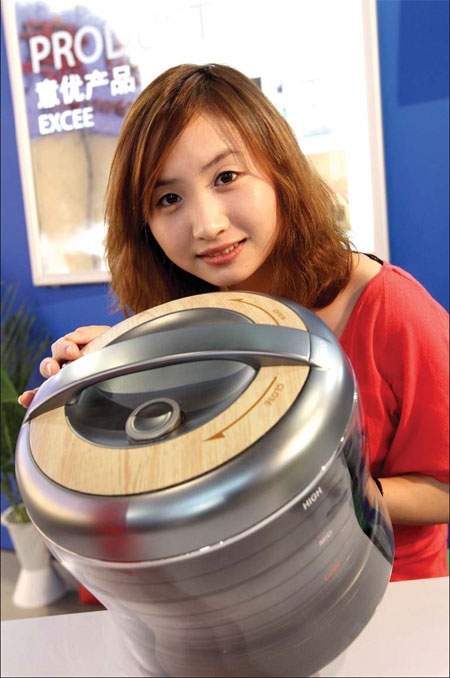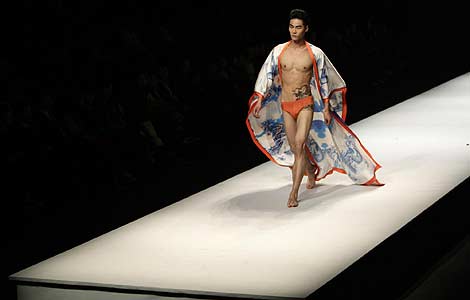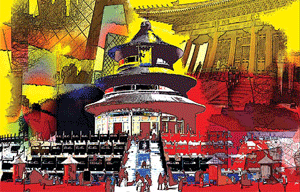Grand designs of Chinese manufacturers
Updated: 2011-11-04 11:04
By Jing Ji (China Daily European Edition)
|
|||||||||
The nation's companies are becoming increasingly aware of the importance of design and marketing
Yang Mingjie was happy and proud when his packaging design, which he considered a statement of simple elegance, won the admiration and approval of his client, Joyoung of Shandong province, best known for its machines that make soy milk for homes.
|
 A specially designed cooker, whose color changes reflect changes in temperature, on display at an exhibition in Beijing. Design-based brand-building has become a buzzword for manufacturers in the Yangtze River Delta. [A Jing / for China Daily]
|
However, Yang's excitement was short-lived. Consumers in various markets were quick to show their displeasure at the new packaging, which they considered too bland. "Chinese consumers want to see lots of color and patterns on the packaging," Yang says. "We had to do a complete redesign to suit the consumers' taste while trying to avoid looking too chintzy," he says.
Yang's story exemplifies the steep learning curve that Shanghai designers are experiencing as demand grows for their services from manufacturers keen to move up the value-added chain by building their own brands. Indeed, brand-building has become a buzzword among the many thousands of manufacturers in the Yangtze River Delta as they struggle to skim a profit in industries squeezed by rising costs and slowing demand.
For many factory owners with a background in contract manufacturing for overseas buyers, tapping the domestic market with their own branded products is the only way to survive over the longer term. Their newly adopted business strategy has spawned a multi-billion-yuan creative industry in Shanghai, a city playing host to a growing crowd of Western-trained designers, advertising experts and marketing professionals.
Meanwhile, Shanghai's municipal government has made the creative industry the focus of its efforts to promote the city's service sector as it tries to further diversify its growth engines from over-reliance on manufacturing and real estate investment. At a Shanghai municipal government working conference for the fourth quarter of 2011, Mayor Han Zheng emphasized that the city was undergoing a critical period of transition, driven by innovation.
Han says the Shanghai economy will maintain moderate but high-quality growth in the coming years, during an accelerating process of economic restructuring and upgrading.
Yang studied design in Germany and worked for the world-renowned company designaffairs GmbH before coming to Shanghai in 2005 to start his own studio, called Yang-Design.
The company has a large client base, ranging from the Shanghai branches of multinationals to domestic start-ups. "We have different strategies tailor-made for different individual clients," he says.
"Many manufacturers looking to transition came to us. Some well-developed domestic companies are well aware of the significance of brand identity. But for start-ups, it is still something remote and new. They are concerned more about the design of single products," Yang comments.
Julong Case & Bag Co Ltd, based in Yiwu, Zhejiang province, and one of China's largest luggage companies, is a typical example of a domestic manufacturer trying to re-engineer its business model with its own brand. Established in 2002, the company had been engaged almost entirely in original equipment manufacturing (OEM), producing goods under contract in strict accordance with the designs and specifications of its overseas customers.
Business was booming until 2008 when demand tumbled as many overseas buyers were hit hard by the financial crisis that sent the global economy into a tailspin. "It was a hard time for the company," recalls Lu Chenghang, Julong's general manager. "We never knew that things could get so bad in a global recession," he says.











